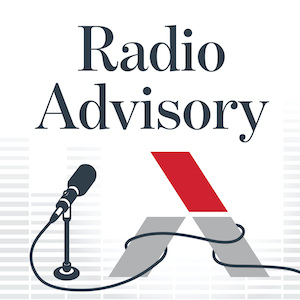Auto logout in seconds.
Continue LogoutWriting for the New York Times, Aaron Carroll, a pediatrician and professor of pediatrics at Indiana University, explains why Americans should be given at-home Covid-19 tests "week after week, free of charge"—and how doing so can help hasten the end of the pandemic.
The policies Biden and states could use to control the omicron variant
A new approach to Covid-19 prevention
Carrol writes that United States leaders need to consider a new approach to the pandemic, given how "woefully short" the nation has fallen in terms of vaccination and other preventive measures, such as masking.
And while Carroll acknowledges that "[o]ther than widespread vaccination, no silver bullet exists to end the pandemic," he argues that regular testing could not only help prevent the spread of cases but also help keep "schools and businesses open at full capacity more easily"—so long as the tests are "ubiquitous and simple."
Specifically, Carroll writes that implementing "[t]est-to-stay strategies" where children and adults who have been exposed to Covid-19 engage in regular testing can help keep people at work or school so long as they continue to test negative. "These strategies can be used in lieu of 10-day or two-week quarantines, permitting life to go on more normally," Carroll writes.
In addition, Carroll says that regular testing can help people receive effective treatment, such as the new antiviral Covid-19 drugs that must be taken during the early stages of infection.
Ultimately, widespread access to free tests "would also allow far more people to more safely live a normal life," Carroll writes.
Why hasn't the U.S. explored this option?
Carroll also pushes back on the Biden administration's plan—scheduled to take effect in January—to reimburse at-home tests through insurance, which he argues is an unnecessarily burdensome process that could inhibit test uptake. "People who want their insurance to cover the tests must first go to a pharmacy (where hopefully tests are available), pay for them out-of-pocket, and then submit documentation to get reimbursed," Carroll writes. "Anyone who has dealt with insurance before knows that this is likely to be cumbersome."
Moreover, while no-cost tests will be available to uninsured individuals at certain community centers and rural clinics, Carroll points out that people will still be required to go out and get them—an obstacle that some people, including those without a car or without "the time or freedom to run to the store," cannot overcome. "Having plentiful tests available already in their homes could make the difference between people testing or not," he writes.
Carroll acknowledges that, to achieve frequent, widespread testing, the country would need to pay for the tests and ramp up production to produce billions of tests—but he contends that "even if [the initiative] cost tens of billions of dollars, it might generate far more than that in productivity," especially given pandemic's already steep economic costs.
Carroll acknowledges other shortfalls of widespread testing, even if implemented: For instance, he notes that widespread at-home testing could make it harder to track positive cases as people may not report them to health authorities, thereby limiting contact tracing and genomic sequencing. And he also acknowledges that other countries with widely available at-home tests still experience case surges.
Nonetheless, Carroll questions why the United States isn't exploring every option available to end the Covid-19 pandemic. "If omicron will lead to more cases among both the unvaccinated and vaccinated, people need to be able to learn much faster whether they are contagious," he writes.
"Americans need quick, reliable tests and the ability to frequently use them," Carroll concludes. "They should be available at home, where people make decisions about whether it's safe to socialize, and the tests need to be free." (Carroll, New York Times, 12/8)
Listen to the Radio Advisory episode
Medical misinformation has been a significant problem for a long time, but amid the Covid-19 pandemic, the problem has become even more widespread. In this episode, host Rachel Woods sits down with Dr. Aaron Carroll, author, professor, and Indiana University chief health officer—to discuss what all clinicians should do to combat medical misinformation.
Plus, Advisory Board experts Solomon Banjo and Pam Divack offer their take on clinician’s role in online spaces (with patients and with each other) and translate those same principles for the rest of the industry.
Don't miss out on the latest Advisory Board insights
Create your free account to access 1 resource, including the latest research and webinars.
Want access without creating an account?
You have 1 free members-only resource remaining this month.
1 free members-only resources remaining
1 free members-only resources remaining
You've reached your limit of free insights
Become a member to access all of Advisory Board's resources, events, and experts
Never miss out on the latest innovative health care content tailored to you.
Benefits include:
You've reached your limit of free insights
Become a member to access all of Advisory Board's resources, events, and experts
Never miss out on the latest innovative health care content tailored to you.
Benefits include:
This content is available through your Curated Research partnership with Advisory Board. Click on ‘view this resource’ to read the full piece
Email ask@advisory.com to learn more
Click on ‘Become a Member’ to learn about the benefits of a Full-Access partnership with Advisory Board
Never miss out on the latest innovative health care content tailored to you.
Benefits Include:
This is for members only. Learn more.
Click on ‘Become a Member’ to learn about the benefits of a Full-Access partnership with Advisory Board
Never miss out on the latest innovative health care content tailored to you.


